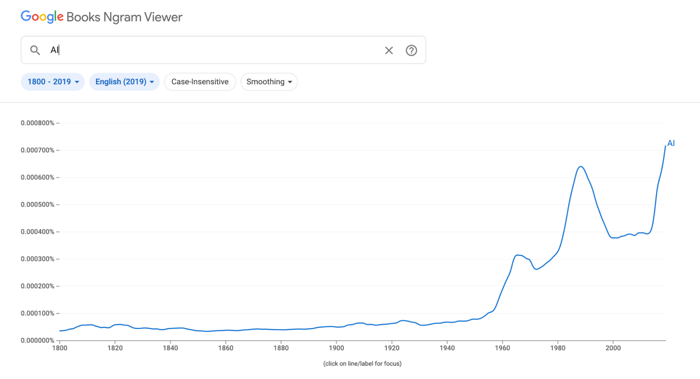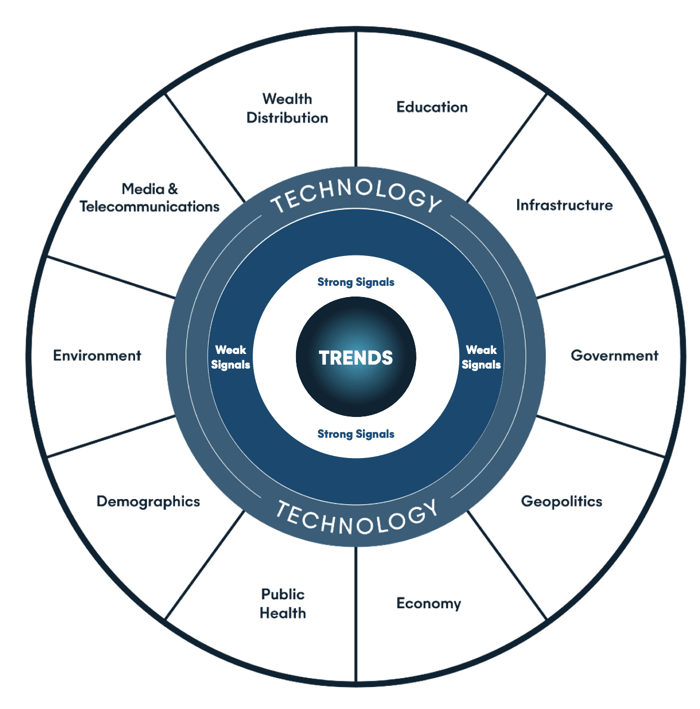How to Leverage Tech Trends to Thrive in the Age of Disruption

The fast pace of change, however, can be daunting for any business owner – and rightly so. How can you stay up to date with the latest technology trends when you’re busy running your business? And how do you spot the difference between a valuable trend or a fleeting fad?
The good news is it’s surprisingly easy to keep up with tech trends if you know where to look. With the right blend of tools, future thinking, and commitment, you can stay informed about industry trends and take advantage of the ones that will last.
Fads come fast and fade away
What do Segways, virtual pets, and 3D TVs have in common? They’re all fads — those short-lived phenomenons that appear overnight, spike dramatically, and burn out just as fast.
They typically gain credibility thanks to influencer hype and media hysteria. They then enjoy a short period of prominence, followed by a rapid decline when the fad fails to deliver on its promise — i.e., we realize replacing walking with Segways is a bad idea…
Trends describe our futures
Trends, on the other hand, have much longer lifespans than fads. They emerge in response to basic human needs and evolve and grow stronger over time. They also tend to encompass entire areas of technology, rather than just a specific product or brand.
Take artificial intelligence (AI), for example, which has been gaining momentum since the 1950s. You can see the number of times "AI" has been mentioned in scholarly books and materials over the last few centuries below.

From self-driving cars, to natural language processing, AI has evolved to solve problems for countless industries — yet there’s still a long way to go before it reaches its full potential. As brands keep finding ways to transform AI into tangible offerings, the AI trend will continue to drive massive innovation and have lasting effects.
Trends are driven by change
Trends are an indication of change and developments in the marketplace. While change can come from anywhere, according to the Future Today Institute there are 11 sources of disruption that organizations should look out for when speculating about the future. These are the macro forces that shape our world.

Technology acts as the primary connector between these change drivers and trends. By solving a real problem brought about by change or uncertainty, technology can help keep your business ahead of the next wave of disruption.
Take COVID-19’s impact on schooling, which created the most severe global education disruption in history. While many public schools were woefully unprepared for this interruption, online charter schools could scale up their offering to deliver virtual education for students free of charge. While face-to-face learning will likely always have a place in education, this highlights how easily outdated business models can cave in and more innovative ones can take over.
Signals indicate emerging change
Signals are pieces of information that indicate emerging change that might have a lasting impact.
Strong signals are those that are easy to identify, interpret, and act on. These are big innovations or maturing developments that companies deliberately look for as part of their strategy — like AI or blockchain, for example.
Weak signals, on the other hand, are the first indicator of a change that may become significant in the future. These could be the initial whispers of a new social media platform on the horizon, for instance. While weak signals are much harder to interpret, they have greater potential to shape the future in big ways. Focusing on the early detection of weak signals is, therefore, the most effective way to give your business a competitive edge.

Key benefits of staying on top of trends
While it may be tempting to continue with what your company has done in the past, incorporating new trends as they emerge can set you apart and keep you informed about your industry. In fact, 90% of companies agree that predicting and planning for the future is important to the success of their business.
Here are just a few of the ways keeping up with trends can benefit your business:
- Forecasting
- Industry leadership
- Staying relevant
- Being ready
- New opportunities
- Growth
- Brand credibility
The 7-step trend forecasting funnel
So, now you’ve learned why staying on top of trends is crucial, you’re probably wondering how to get started? Following a structured process can be instrumental in leaving no stone unturned.
The strategic forecasting funnel below has been developed by Futures Today Institute and uses quantitative and qualitative data to identify weak signals and map their trajectories into tech trends. The seven steps can be used both to surface new trends or to guide your strategic planning process.
- Framing: Determine your questions, time horizons, and stakeholders.
- Discovering: Listen for weak signals at the fringe. Make observations and harness information from the broadest possible array of sources and on a wide variety of topics.
- Analyzing: Uncover hidden patterns in the previous step. Look for contradictions, inflections, practices, hacks, extremes, and rarities.
- Clarifying: Ask questions to learn how the trends you’ve identified intersect with your industry and all of its parts.
- Calculating: Calculate the velocity and trajectory of change that are both internal and external to your organization.
- Planning: Write scenarios to describe impacts and outcomes in the future.
- Action: Backcast preferred outcomes. Define the desired future and then work backwards to identify the strategic actions connecting that future to your present.
Resources to help you spot the early signs of change
There are endless tools and resources available to help make the above trend-spotting journey easier. Here are a few to get you started:
- Strategic foresight: While not exactly a tool, strategic foresight, also known as future thinking, is a crucial activity that every business should use to reduce uncertainty about the future. By leveraging qualitative and quantitative data, frameworks, and tools to build plausible versions of the future, businesses can make better decisions in the now.
- Horizon scanning or fringe sketching: Similar to a mind map, horizon scanning or fringe sketching helps you map out the direct and indirect relationships between a wide range of technological and cultural phenomena, all with a central topic at their nucleus (useful during step two above).
- CIPHER: Future Today Institute’s CIPHER framework can be used to uncover hidden patterns. It helps to categorize the signals that surfaced during horizon scanning or fringe sketching (helpful during step two of the trend forecasting funnel above).
- Vision in Product Design (ViP): ViP is a design approach from the mid-90s that’s all about creating a future vision for strategic direction and concept design. ViP is interaction-centered, context-driven, and focuses on future possibilities rather than solving modern-day problems (relevant for steps six and seven in the trend forecasting funnel).
- Leverage the work of others: If all else fails, there are many reputable companies out there providing timely information about the latest technology trends. Trend watchers, Gartner, and Future Today Institute are a few great examples. However, if you're looking to stay ahead of the curve, you can’t rely solely on trends spotted by other companies.
Questions to relate trends back to your business
Once you’ve identified trends on the market, it’s important to determine how these relate back to your organization. Asking yourself these ten questions (step four above) can help you decide whether a trend is worth pursuing.
- How does this trend impact our industry?
- Who are the drivers of change in this trend?
- How are companies in adjacent spaces addressing this trend?
- Where does this trend create new partners or collaborators for us?
- How are competitors harnessing this trend?
- Which of our current or future customer segments does this trend address?
- How will the wants, needs, and expectations of our customers change as a result of this trend?
- Will this trend create new competitors for us?
- Does this trend inspire us?
- How does this trend help us to think about innovation?
Remember: being first isn’t always best
While being the first to jump on a trend can bring about many benefits, it’s not always a guaranteed advantage. First movers may need to invest heavily and take risks to persuade consumers to try a new product. Later entrants, on the other hand, can benefit from these informed buyers and can avoid the first movers’ mistakes.
What’s more, even when all signs point to something being a fad, over time, it may take root throughout society and become a lasting phenomenon.
Can you believe that cars, laptops, and bicycles were all considered fads?
Similarly, despite all signals pointing to something being the next big trend, sometimes it takes longer than expected for that trend to reach its full potential. Take the wave of expectation around virtual reality (VR) in 2016 that many believed would be the year it would become as common as televisions. Even with optimism and heavy investment from big names, without broad consumer or developer adoption, some trends take longer to break through.
Businesses must embrace disruption to thrive
Despite its complexities, the benefits of keeping on top of trends far outweigh the risks. Embracing uncertainty is the only way to plan for and respond to forces outside of your control, and stay ahead of disruption for years to come.







